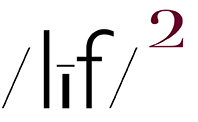view from 1st hole tee on the Mountain Course - all photos (embigenable)
the 3 of us
“My photographs are visual analogues for the quality of my life, a private view of subject matter found in the commonplace reality of the Adirondacks.”
THE OPENING LINE IN MY ARTIST STATEMENT FOR MY Adirondack Survey body of work could, with a slight modification, be used for just about all of my various bodies of work – substitute “in my life long walk about the planet” in place of “in the commonplace reality of the Adirondacks” and there you have it, a one size fits all statement that is applicable to just about every photograph I have ever made (commercial work excepted).
I mention this pursuant to my last entry wherein I reiterated my promise to not turn this blog into some kind of written personal diary. But, truth be told, my photography is in fact a visual personal diary of sorts. That’s cuz I do not make pictures of things, I make pictures of life in all its forms and locations. Hence my propensity for discursive promiscuity.
Despite that propensity, I have numerous individual bodies of work which fall under the headings of “traditional” photo genres–people, places, things, street, landscape, still life, et al– but, that written, I rarely make a photo with a genre-driven idea in mind. Virtually all of my individual assemblies of genre-related photos were organized together well after the fact of their making.
In any event, on occasion I do post photos that do seem to call for a caption / description of sorts. Say, like .… those in this entry ….
a.) I do not write about my golf game but I do post photos of my golf experiences, most often in the form of a landscape photo. However, yesterday, I played golf with my son and grandson on our home course–the Lake Placid Resort Course (45 holes, 2 18s and 1 9 hole par 3 course)–where we are privileged to play for free. That written, the real “story” here is that I am so lucky, fortunate, and graced with the opportunity to play with my multi-generation progeny on a regular basis–although grandson is only home from college for the summer. And, FYI, independent of that story is the fact–which may be understood by just looking at the pictures–is that, no matter how well–or not–one is playing, the old saying of “Golf is a good walk spoiled” does not apply on this course. It is always a grand and glorious good walk.
b.) Bet ya didn’t know that the Adirondack chair most often seen in photos are a later day version of the original Adirondack chair, aka: the Westport Adirondack chair. That chair design was the very first Adirondack chair which dates back 1903 and the Adirondack village of Westport. iMo, and to my eye and sensibilities, that chair is the most simple and elegant chair, of any kind, ever designed. That’s why we have 3 of them on our front porch. And, BTW, our cat also likes them.
